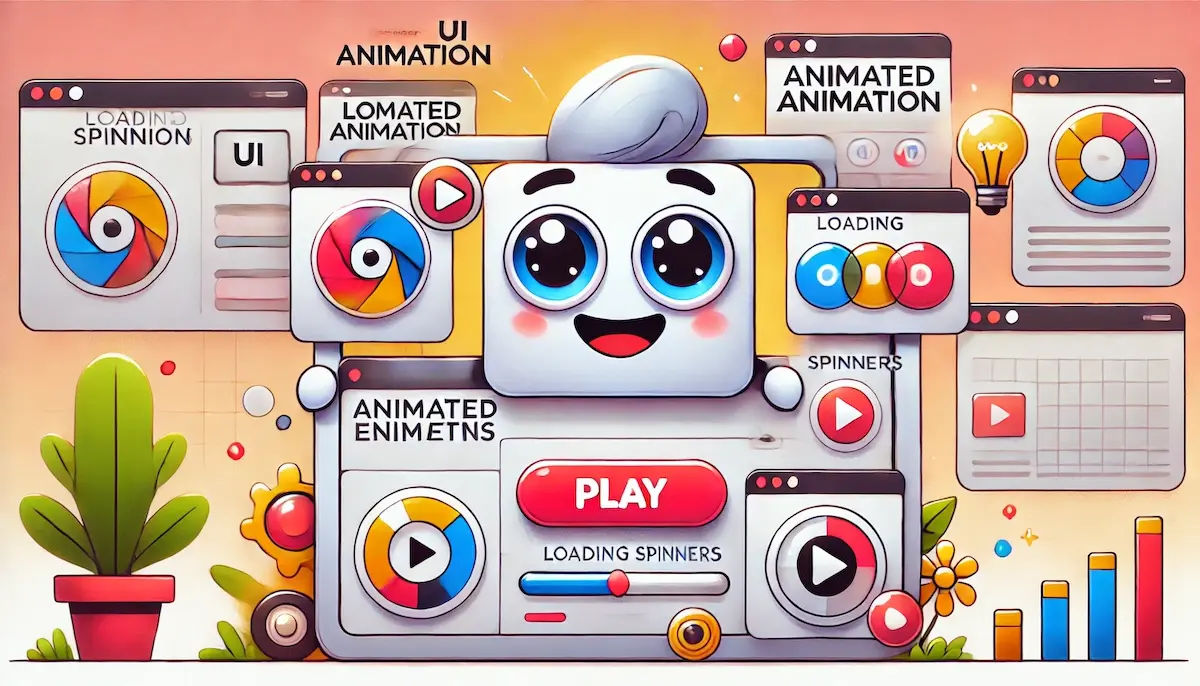UI animation refers to the use of motion in user interfaces to enhance the user experience. It involves adding movement to elements such as buttons, icons, and screens to make interactions more engaging and intuitive. When done correctly, UI animation can significantly improve the usability and overall aesthetic of a digital product.
What is UI Animation?
UI animation is the process of incorporating motion into the design of user interfaces. It includes a variety of elements such as transitions, microinteractions, loading animations, and hover effects. These animations help to guide users, provide feedback, indicate state changes, and add a sense of dynamism to the interface.
The Importance of UI Animation
UI animation plays a crucial role in user experience for several reasons:
- Enhances Usability: Animation can make interfaces more intuitive by providing visual feedback and guiding users through interactions.
- Improves Engagement: Well-crafted animations can make a product more enjoyable to use, capturing users’ attention and keeping them engaged.
- Communicates State and Changes: Animations can indicate changes in state, such as loading progress or successful actions, helping users understand what is happening.
- Provides Visual Hierarchy: Motion can draw attention to important elements and guide users through a logical flow, enhancing the overall usability of the interface.
- Adds Personality: Thoughtful animations can inject personality into a product, making it feel more human and less mechanical.
Key Principles of UI Animation
Several principles guide effective UI animation:
- Purposeful and Functional: Every animation should serve a purpose, such as providing feedback, guiding users, or enhancing navigation. Avoid gratuitous animations that do not add value.
- Smooth and Natural: Animations should feel natural and smooth, mimicking the laws of physics to create a realistic sense of motion. Use easing functions to make animations feel more fluid.
- Consistent: Maintain consistency in animation styles and behaviors across the interface to avoid confusing users. Establish guidelines for timing, easing, and types of animations used.
- Responsive: Ensure animations perform well across different devices and screen sizes. Avoid complex animations that may cause performance issues, particularly on mobile devices.
- Subtle and Delicate: Subtle animations are often more effective than exaggerated ones. They can enhance the user experience without being distracting or overwhelming.
Types of UI Animation
Several types of UI animation are commonly used in interface design:
- Microinteractions: Small, subtle animations that occur in response to user actions, such as button presses, form inputs, and toggles. They provide feedback and enhance the sense of interactivity.
- Transitions: Animations that occur when users move from one state or screen to another. Examples include sliding menus, fading content, and smooth page transitions.
- Loading Animations: Visual cues that indicate progress during loading times. These animations reassure users that the system is working and reduce perceived waiting time.
- Hover Effects: Animations triggered when users hover over an element, such as buttons or links. They provide visual feedback and highlight interactive elements.
- Notifications and Alerts: Animations that draw attention to notifications or alerts, ensuring that users do not miss important messages.
Implementing UI Animation
Implementing effective UI animations involves several steps:
- Identify Use Cases: Determine where animations will add value in the interface, such as guiding user actions, providing feedback, or enhancing visual appeal.
- Define Animation Styles: Establish guidelines for animation styles, including timing, easing functions, and motion paths. Consistency is key to creating a cohesive experience.
- Create Prototypes: Use design tools like Adobe After Effects, Principle, or Figma to create animation prototypes. Test these prototypes to gather feedback and make necessary adjustments.
- Develop and Test: Implement animations using CSS, JavaScript, or animation libraries like GreenSock (GSAP). Test animations across different devices and browsers to ensure performance and responsiveness.
- Iterate and Refine: Continuously gather user feedback and monitor performance metrics. Make iterative improvements to enhance the overall effectiveness of the animations.
Conclusion
UI animation is a powerful tool that can significantly enhance the user experience by making interfaces more intuitive, engaging, and enjoyable. By following key principles and best practices, designers can create animations that add value and improve the overall usability of digital products.
Blockfine thanks you for reading and hopes you found this article helpful.
